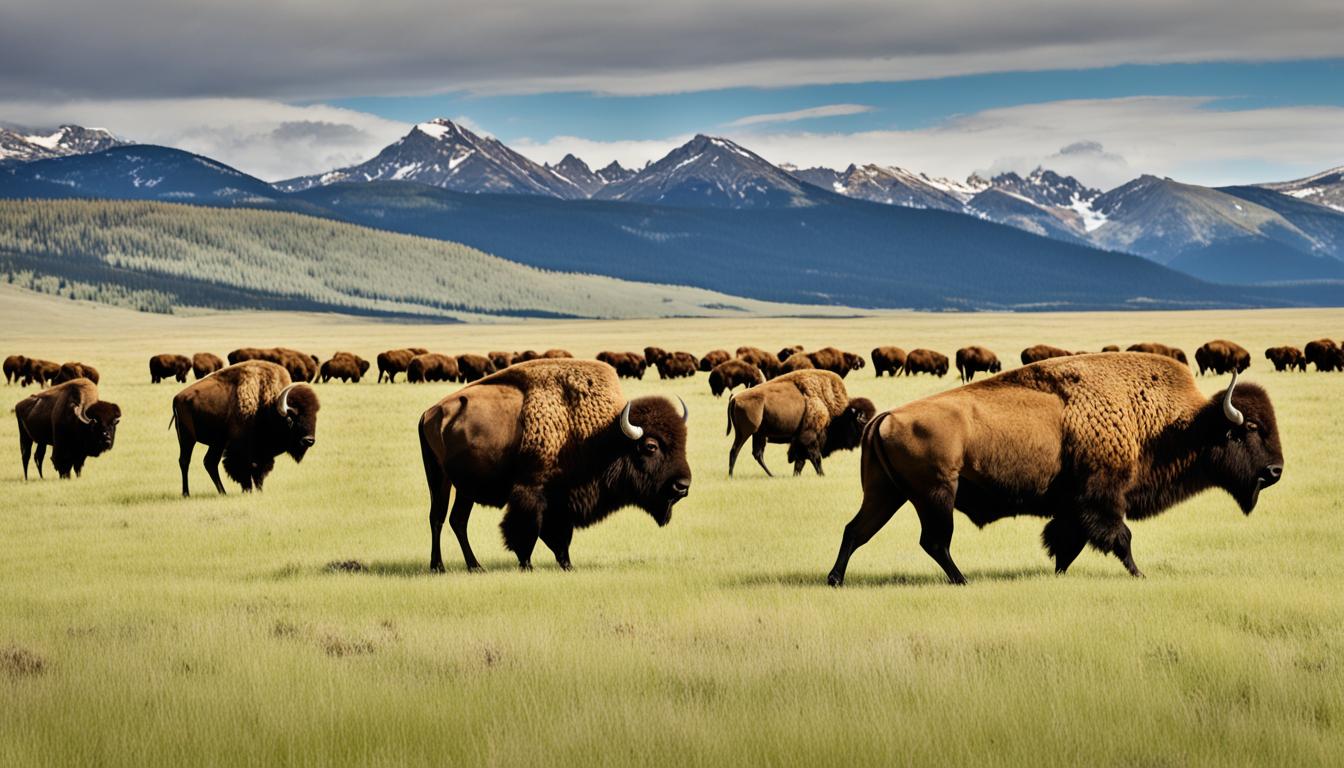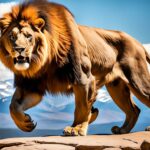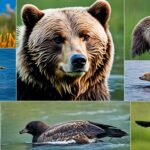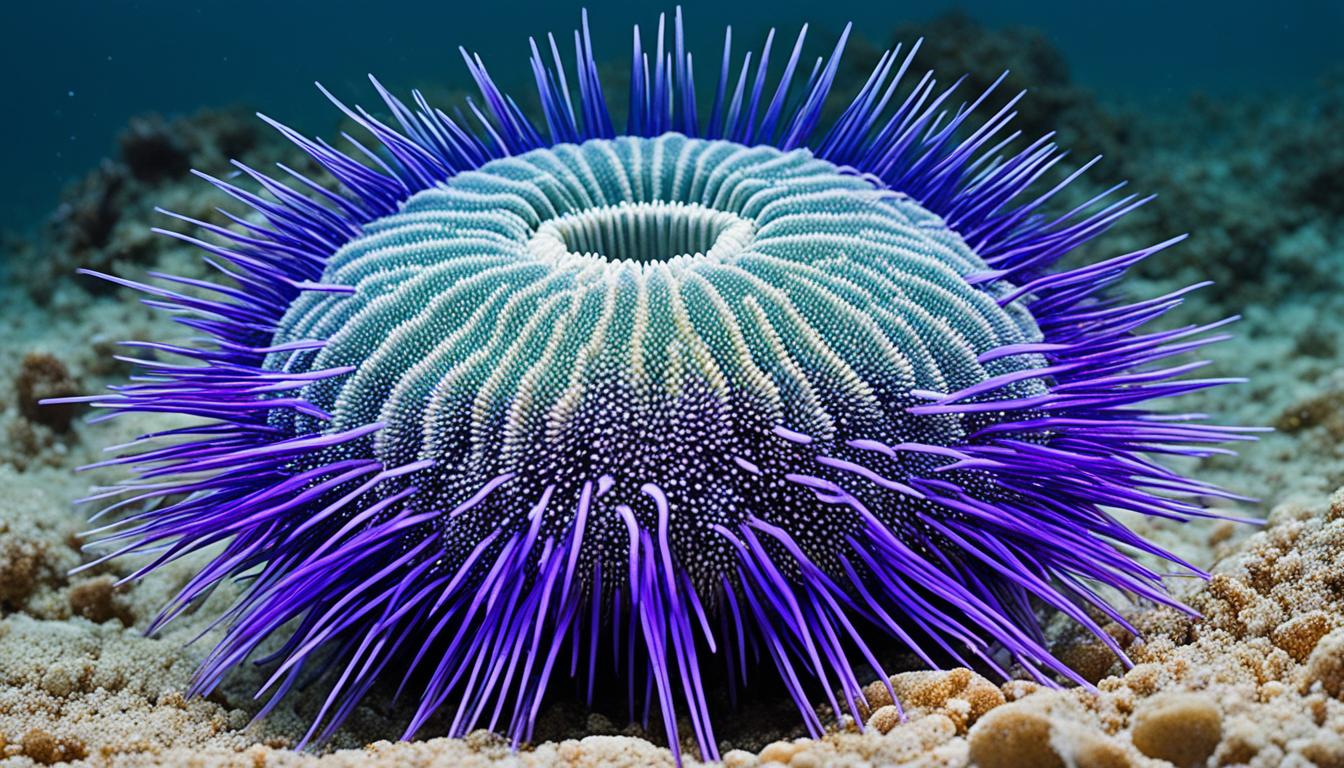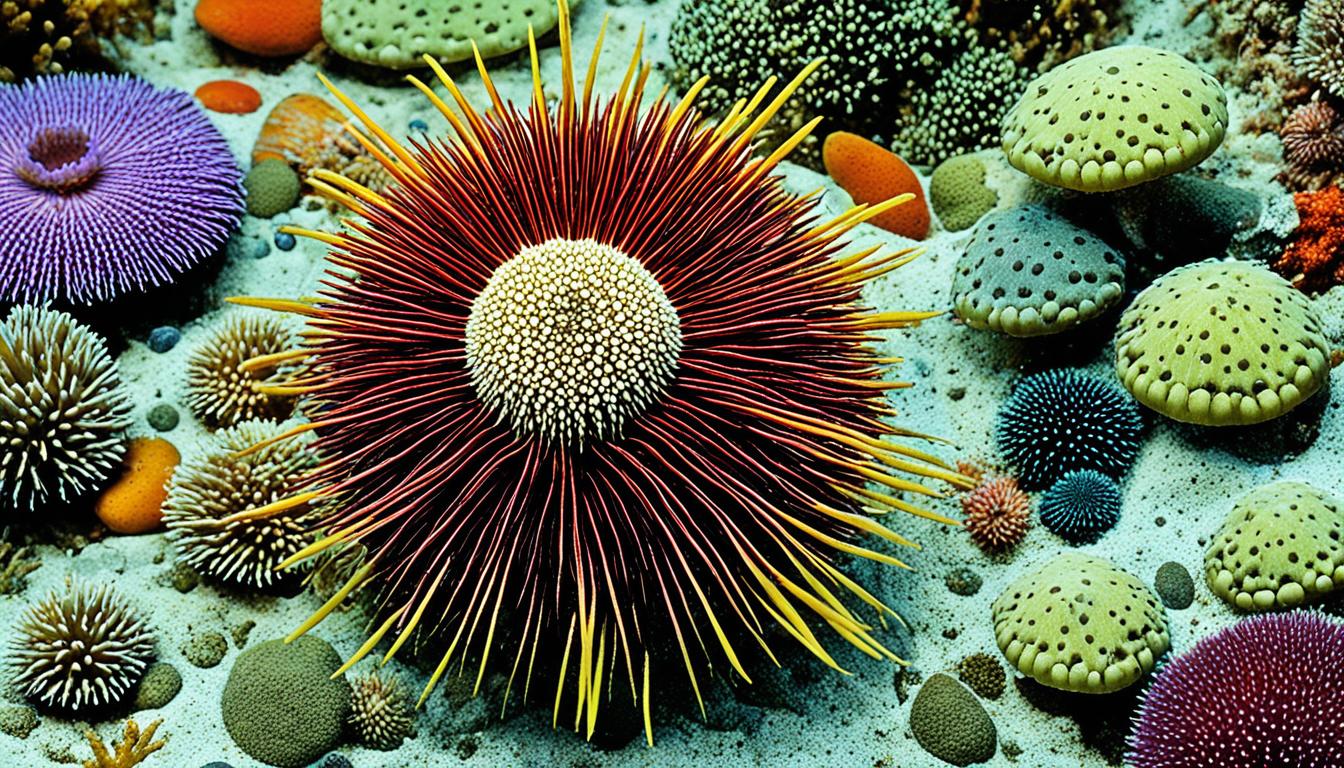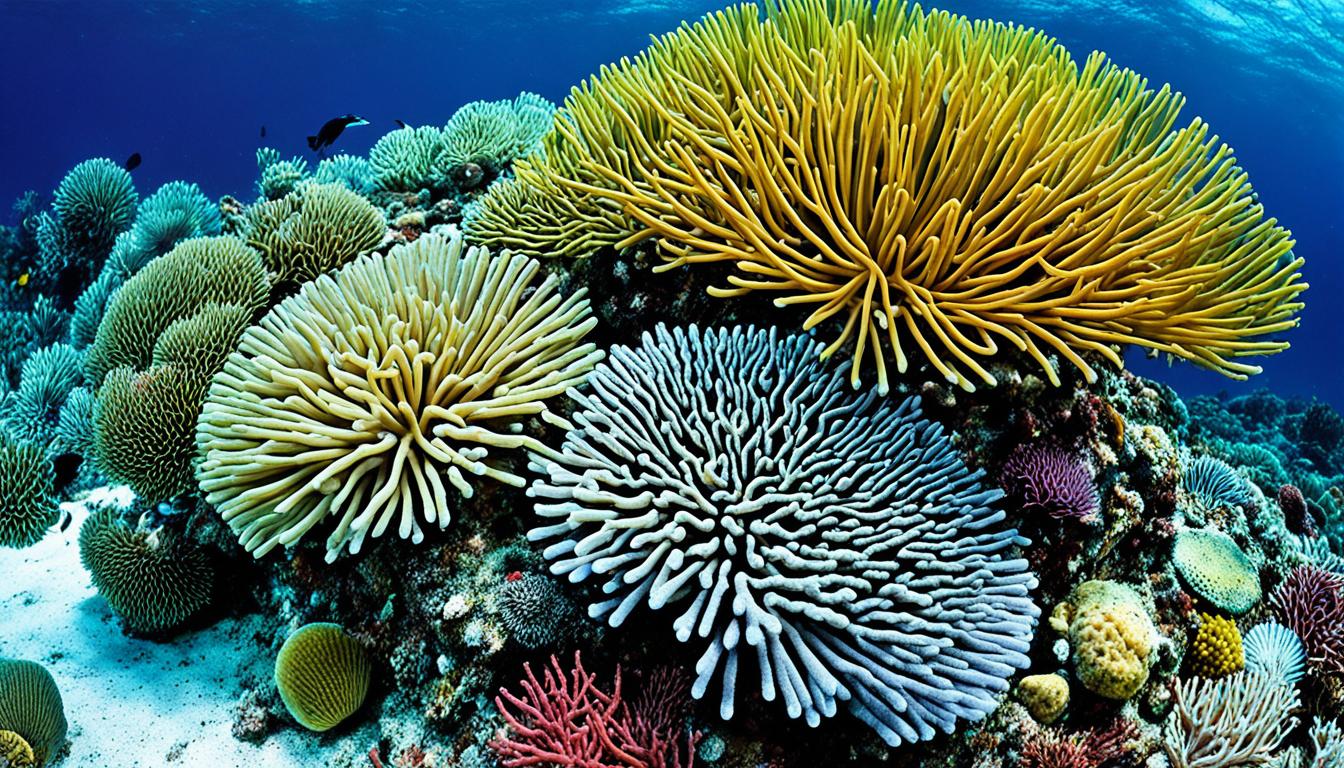Have you ever wanted to see bison roam in the wild in the U.S.? Watching these huge animals in America is quite easy. Many places in the country let you get an up-close look at bison.
Bison are North America’s biggest land animals. They reflect our rich national history. Sadly, by the late 1800s, their numbers had fallen sharply. Once 60 million strong, they went down to just a few hundred.
Luckily, groups like the American Bison Society stepped in. They worked hard to save the bison. Because of them, today’s wild bison count is around 20,000. On top of that, about 500,000 more bison live on private lands.
The Wildlife Conservation Society and the Blackfeet Nation did a lot to help. Thanks to them, bison freely roam open lands once again. In 2016, the United States made the bison its national mammal. Now, you can see these amazing animals in many places. These places include lands overseen by the Department of the Interior, Native American reservations, and private areas.
You’ll have the best chance of seeing bison during certain seasons. Look for them in spring when calves are born. Also, in summer, during the rutting season. The fall is a good time too, for their migration. And even in winter, when bison graze through the snow.
Yellowstone National Park: A Premier Spot for Bison Viewing
Yellowstone National Park spans Idaho, Montana, and Wyoming and is a top place to see bison in the U.S. It’s known for its stunning natural beauty and has the most non-commercial bison. With almost 5,000 bison, it’s the only place where these animals have always lived since long ago.
This makes Yellowstone key for seeing real American bison in their natural setting. Unlike bison in other places, these freely roaming bison act just as they would in the wild. They breed, have babies, and move around as they did long before we arrived.
In Yellowstone, you can see bison doing many things. In spring, watch as new baby bison are born. By summer, you’ll see the males showing off to win over the females.
As autumn approaches, the bison head elsewhere, and winter means seeing them in snow-covered places, looking for food.
These sights show how these animals have always lived and how Yellowstone works hard to keep them safe. If you love wildlife or history, seeing bison in Yellowstone is a must-do.
Below is a list of the best places in the park to spot bison:
| Key Locations | Best Viewing Seasons |
|---|---|
| Lamar Valley | Spring, Summer |
| Hayden Valley | Summer, Fall |
| Mammoth Hot Springs | Winter |
Each spot listed offers a special chance to see bison in their natural environment. It’s a sure way to make unforgettable memories.
Best Times of Year to See Bison in the USA
Watching bison in their natural home shows their big life changes yearly. Seasons make the sightings different and amazing for nature lovers.
Spring Calving Season
The time from March to May is special for fans of wildlife. You’ll see bison calves just born, stepping out for the first time. It’s amazing to watch them with their moms, a really touching sight.
Summer Rutting Season
In July and August, bison bulls show off their strength. They fight to be the boss and win over females. Seeing this in the summer is thrilling for those who love nature.
Fall Migration Period
From September to November, bison herds move to their winter spots. It’s a key time to see them gather and travel together. This shows how strong and smart they are as a group.
Winter Grazing in the Snow
December through February offers a unique chance for bison watching. Seeing them in snowy settings shows their tough side. It’s a beautiful season to spot these amazing creatures in the USA.
| Season | Activities | Optimal Viewing Period |
|---|---|---|
| Spring Calving | Newborn calves taking first steps | March – May |
| Summer Rutting | Mating behaviors and dominance displays | July – August |
| Fall Migration | Herds moving to winter grounds | September – November |
| Winter Grazing | Bison foraging in the snow | December – February |
American Prairie Reserve: Bison in their Natural Habitat
The American Prairie Reserve in Montana is a symbol of bison habitat conservation in the US. Since 2004, this non-profit has been collecting large areas of native grasslands. Their goal is to build a 3 million-acre prairie wilderness. Here, visitors can marvel at the sight of bison roaming free, over vast lands.
The core of the reserve’s mission is to let bison roam the Sun Prairie area naturally. This provides a real, unfiltered view of these amazing animals. It’s a new kind of wildlife adventure, focused on realness and protecting these creatures.
In the autumn, the bison herds gather more, creating a special bison-watching time. It showcases the bison in their true home, underlining why we need to safeguard our natural treasures.
| Key Details | Information |
|---|---|
| Location | Montana |
| Established | 2004 |
| Target Acreage | 3 Million Acres |
| Main Attraction | Free-Roaming Bison |
The American Prairie Reserve is a must-visit for those who care about bison and their homes. A trip here offers a unique chance to see these wonderful animals in a place that reflects their historic lands. It’s not just about an exciting wildlife view but also about the big work in conservation.
Antelope Island State Park – Utah’s Bison Sanctuary
In the midst of the Great Salt Lake, you’ll find Antelope Island State Park. It’s an amazing place to see bison, with a herd dating back to 1893. The park is huge, covering 42-square-miles, perfect for bison to roam and for visitors to see them in the wild.
There are about 700 bison on the island, making this the second-oldest public bison herd in the country. Antelope Island’s scenery makes it easy to spot these amazing animals. Plus, you get a historical vibe. If you’re into bison, this is the place to be in the U.S.
| Feature | Description |
|---|---|
| Location | Great Salt Lake, Utah |
| Herd Size | Up to 700 bison |
| Established | 1893 |
| Area Covered | 42 square miles |
| Significance | Second-oldest publicly owned bison herd in America |
Want to see bison in Utah? Antelope Island State Park is the place to go. It’s a top spot in the U.S. due to its rich history and easy access. Seeing these vast animals against the stunning Great Salt Lake is truly memorable.
Catalina Island: Unexpected Bison Viewing
Seeing bison on Catalina Island might be surprising. It’s a coastal location, after all. But these big animals have called the island home for almost 100 years. Their presence has added an exciting chapter to Catalina Island’s wildlife story. It draws people who love nature from everywhere.
History of Bison on Catalina Island
In 1924, 14 bison were brought here for a movie. The film crew left, but the bison stayed. They’ve become a key part of the island’s nature. Thanks to careful efforts, the bison now number around 150. They are looked after by the Catalina Island Conservancy.
Eco Tours and Spotting Bison
You can see these amazing animals through bison eco-tours. These are run by the Catalina Island Conservancy and the Catalina Island Company. Guides take you close to the bison. You see them in their own habitat and learn about the island’s environment. The bison often graze calmly, which is a really special experience.
Conservation Efforts on Catalina Island
The bison here show part of the bigger picture on bison conservation in the USA. The Catalina Island Conservancy works hard to manage the bison group. Its efforts help keep the island’s nature balanced. Conservation work includes making homes better for the animals and managing their numbers. This aims to keep the bison strong and doing well.
Grand Canyon National Park: Home to a Free-Roaming Herd
The vast expanses of the Grand Canyon National Park are perfect for seeing the bison. These majestic animals mainly live on the Kaibab Plateau and the North Rim. The setting makes for a unique wildlife viewing experience in one of America’s most famous places.
Managing wild bison in Arizona involves corralling and hunting. These efforts are key to keeping the park’s ecosystem healthy. Visitors who want to see bison are asked to bring binoculars. This way, they can get a closer view of these amazing creatures in their natural home.
Here’s an overview of where to see bison at Grand Canyon National Park:
| Location | Main Features | Best Viewing Times |
|---|---|---|
| Kaibab Plateau | Dense forests, diverse terrain | Spring and Fall |
| North Rim | Spectacular canyon views | Summer and Winter |
Exploring these areas is a great way to see wild bison in Arizona. If you plan to see bison in the USA, remember to time your visit well. This way, you’ll have the best chance of spotting these impressive animals.
Wind Cave National Park: Bison Amongst the Caves
Wind Cave National Park in South Dakota is a special place. It’s great for anyone who loves wildlife. Here, you can see bison in their natural home. The park covers over 33,000 acres. About 350 bison live here, walking around the famous caves.
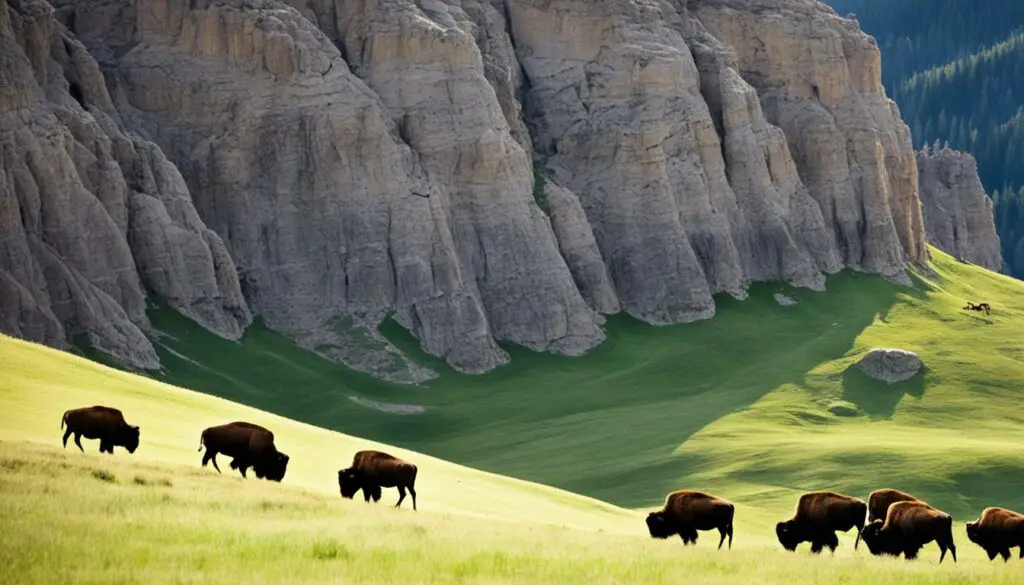
Habitat and Characteristics of Wind Cave Bison
At Wind Cave National Park, bison are doing well. They live in a mix of grasslands and open areas. Such a habitat sits above cave systems. These bison are used to the changing fields. They always find good places to eat. Seeing them here makes you understand their big and diverse homes.
Visitor Guidelines for Safety
Watching bison at Wind Cave is amazing. But it’s important to stay safe. Bison can be unpredictable and strong. Always keep at least 25 yards away. Also, don’t surprise them with loud noises or fast movements. These rules are for both your safety and the bison’s.
Remember, bison here are wild. So, you must be careful and show them respect. Learn the right way to watch them. Then, enjoy their beauty in this peaceful place.
Historical Background on the Decline and Recovery of Bison
The American bison’s story is one of a near-disappearance and a stunning return. At one point, millions of bison freely lived on the Great Plains. They were essential to the land and cultures of many Native American tribes. But, as America expanded west in the 19th century, bison faced a crisis. They were hunted with no limits, almost vanishing completely. By the late 1800s, there were less than a thousand bison left.
The near loss of the bison sparked action. Early conservationists like Theodore Roosevelt and groups such as the American Bison Society started to save them. Places like Yellowstone National Park became safe zones for bison to rebuild their numbers. The effort saw the combining forces of government, private owners, and native people working together. This teamwork was key in saving the bison.
Today, we celebrate the remarkable comeback of the American bison. Once critically endangered, now about 20,000 bison roam free, with half a million more in managed areas. This success is a model of hope for saving other creatures. The bison’s incredible story shows the power of focused conservation. It highlights the need for ongoing efforts to protect wild places. Ensuring bison thrive is vital for the health of America’s natural spaces.

